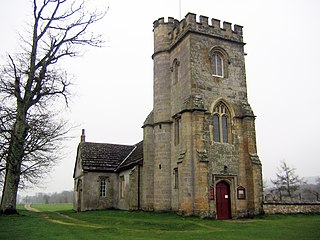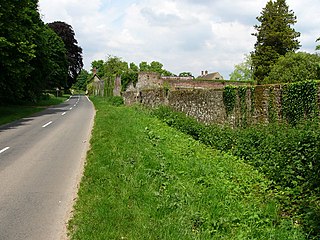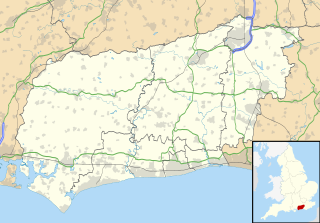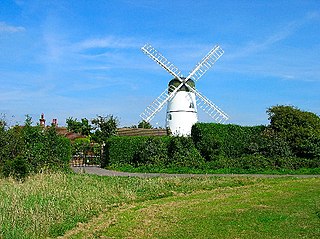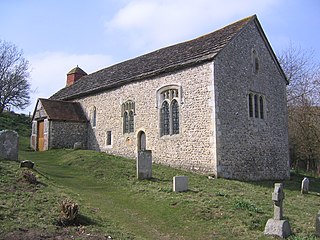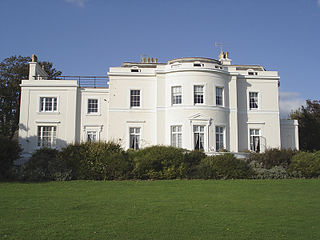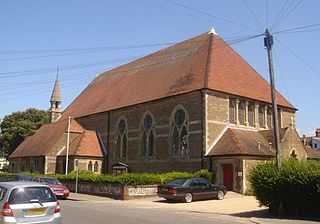
Hardham Priory was an Augustinian priory in Hardham, West Sussex, England.

Hardham is a small village in the Horsham District of West Sussex, England. It is on the A29 road 1.2 miles (2 km) southwest of Pulborough. It is in the civil parish of Coldwaltham

West Sussex is a county in the south of England, bordering East Sussex to the east, Hampshire to the west and Surrey to the north, and to the south the English Channel.

England is a country that is part of the United Kingdom. It shares land borders with Wales to the west and Scotland to the north-northwest. The Irish Sea lies west of England and the Celtic Sea lies to the southwest. England is separated from continental Europe by the North Sea to the east and the English Channel to the south. The country covers five-eighths of the island of Great Britain, which lies in the North Atlantic, and includes over 100 smaller islands, such as the Isles of Scilly and the Isle of Wight.
It was founded around 1248 by Sir William Dawtrey as a priory of Black Canons of St Augustine which was at first called Heringham Priory. It was enlarged by Sir William Pagnell during the reign of Edward III, but fell into disrepair in the late 15th century and was disbanded in 1534 as part of the Dissolution of the Monasteries. [1]

The term Augustinians, named after Augustine of Hippo (354–430), applies to two distinct types of Catholic religious orders, dating back to the first millennium but formally created in the 13th century, and some Anglican religious orders, created in the 19th century, though technically there is no "Order of St. Augustine" in Anglicanism. Within Anglicanism the Rule of St. Augustine is followed only by women, who form several different communities of Augustinian nuns in the Anglican Communion.

Edward III was King of England and Lord of Ireland from January 1327 until his death; he is noted for his military success and for restoring royal authority after the disastrous and unorthodox reign of his father, Edward II. Edward III transformed the Kingdom of England into one of the most formidable military powers in Europe. His long reign of 50 years was the second longest in medieval England and saw vital developments in legislation and government, in particular the evolution of the English parliament, as well as the ravages of the Black Death.

The Dissolution of the Monasteries, sometimes referred to as the Suppression of the Monasteries, was the set of administrative and legal processes between 1536 and 1541 by which Henry VIII disbanded monasteries, priories, convents and friaries in England, Wales and Ireland, appropriated their income, disposed of their assets, and provided for their former personnel and functions. Although the policy was originally envisaged as increasing the regular income of the Crown, much former monastic property was sold off to fund Henry's military campaigns in the 1540s. He was given the authority to do this in England and Wales by the Act of Supremacy, passed by Parliament in 1534, which made him Supreme Head of the Church in England, thus separating England from Papal authority, and by the First Suppression Act (1535) and the Second Suppression Act (1539).
Its remains stand in an area of water meadows next to the River Arun, 1⁄2 mile (0.80 km) southwest of the village of Hardham. [1] The refectory building has been converted into a farmhouse, which is a Grade I listed building. [2]

The River Arun is a river in the English county of West Sussex. At 37 miles (60 km) long, it is the longest river entirely in Sussex and one of the longest starting in Sussex after the River Medway, River Wey and River Mole. From the series of small streams that form its source in the area of St Leonard's Forest in the Weald, the Arun flows westwards through Horsham to Nowhurst where it is joined by the North River. Turning to the south, it is joined by its main tributary, the western River Rother, and continues through a gap in the South Downs to Arundel to join the English Channel at Littlehampton. It is one of the faster flowing rivers in England, and is tidal as far inland as Pallingham Quay, 25.5 miles (41.0 km) upstream from the sea at Littlehampton. The Arun gives its name to the Arun local government district of West Sussex.

A listed building, or listed structure, is one that has been placed on one of the four statutory lists maintained by Historic England in England, Historic Environment Scotland in Scotland, Cadw in Wales, and the Northern Ireland Environment Agency in Northern Ireland.
